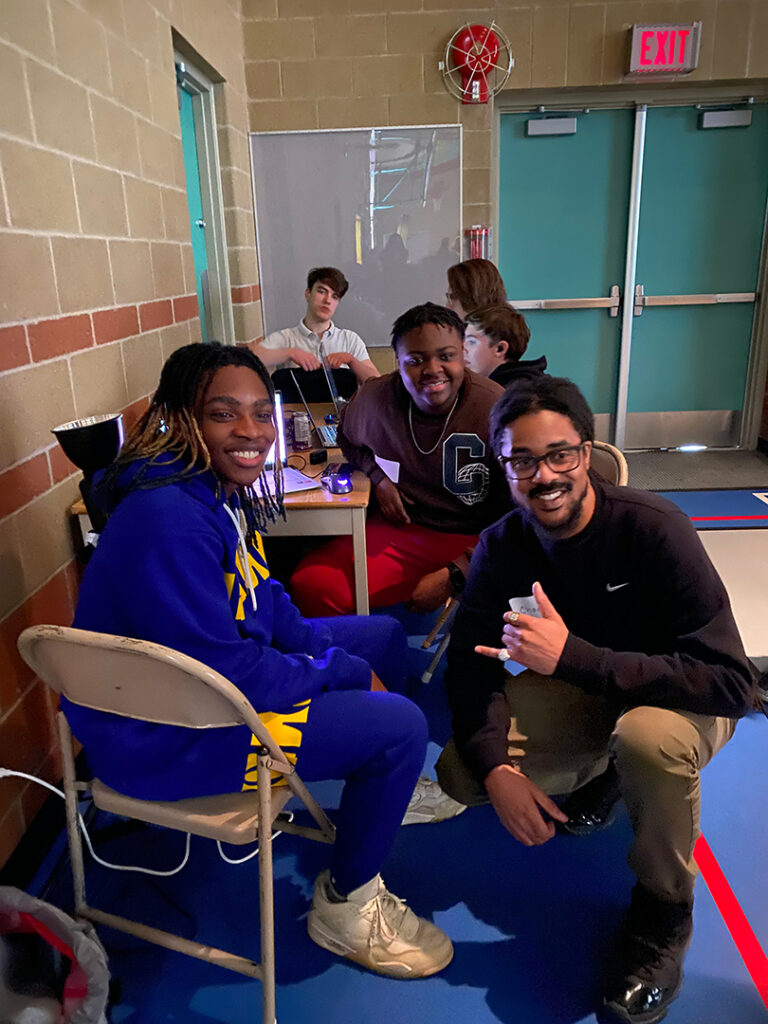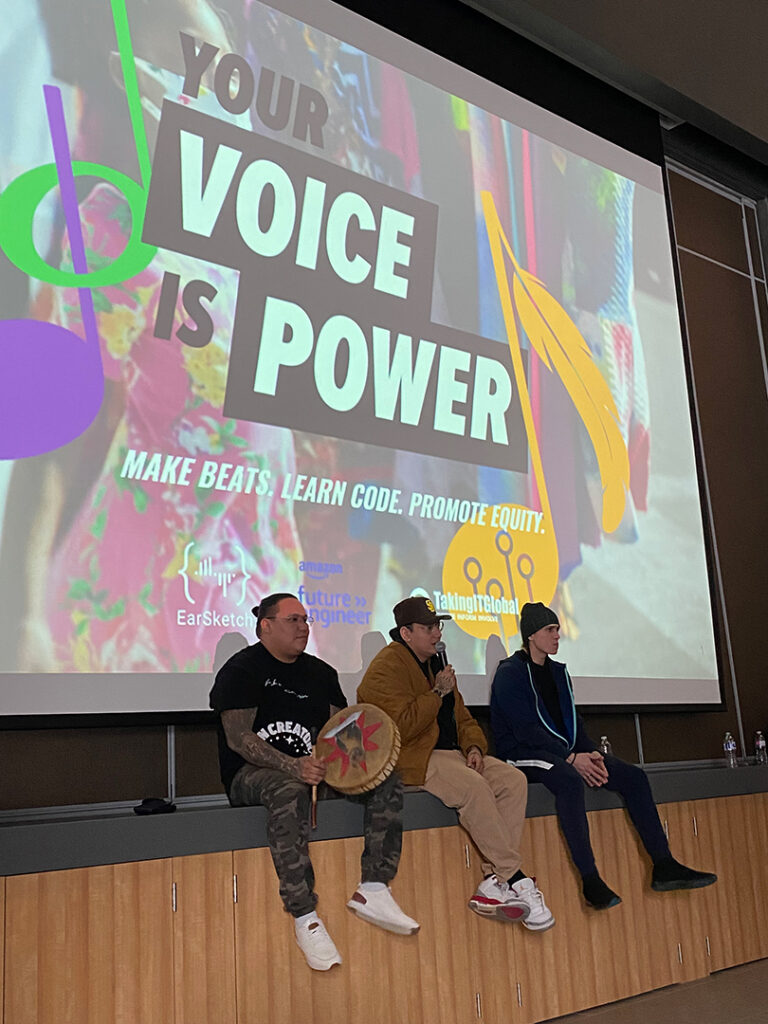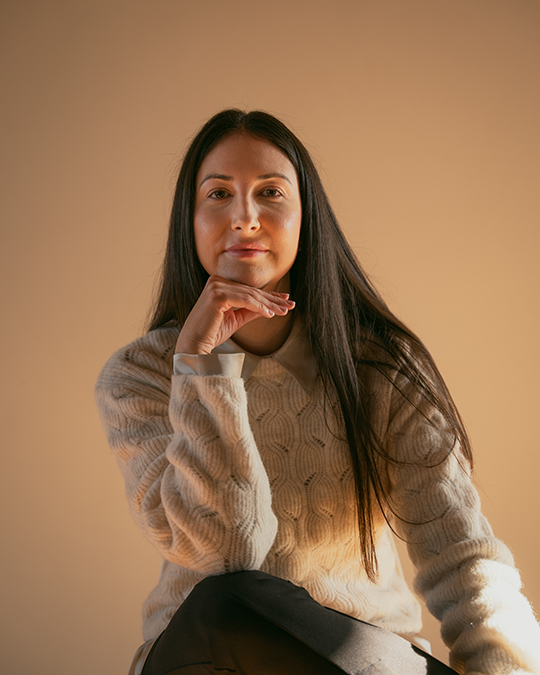Your Voice Is Power
I grew up listening to hip-hop.
I developed a deep appreciation for the artform, so, as a teacher, I’ve integrated hip-hop music in every poetry unit I’ve ever taught. Prior to the Covid-19 pandemic, my passion for hip-hop transcended into a comprehensive, four-month-long explorative journey for my Grade 11 English class. During this unit, students delved into the rich history of hip-hop, collaborated in groups to craft original songs, worked alongside a producer to compose beats, recorded their tracks, and even filmed a music video. This project was always a highlight of the academic year for me, fostering creativity and engagement among my students. However, the onset of the pandemic forced an abrupt change to teaching and learning.
Once the pandemic hit, bringing guests into the classroom was no longer an option. It was around this time I started creating educational resources for TakingItGlobal, a Canadian charity that focuses on promoting collaboration among youth to tackle global issues by promoting awareness and engagement. Shortly thereafter, I was asked if I would be interested in helping to create a new curriculum for the Your Voice Is Power program, a hip-hop coding initiative aimed at inspiring African-American youth in the United States to enter STEM fields, where they are under-represented in the workforce. Amazon sought to extend this program into Canada, tailoring it to Indigenous students who similarly face under-representation in computer science careers. Of course, I said yes.
Over the course of a year, I collaborated with diverse educational stakeholders, including Indigenous community members, Indigenous student-teachers from the University of British Columbia, and another Indigenous educator to shape the curriculum. It was imperative to me that the Canadian iteration of the program pay homage to the roots of hip-hop, which originated in African-American and Latinx communities. To ensure cultural authenticity, I enlisted the expertise of Chad Allsopp, a Bajan-Canadian hip-hop historian, in integrating activities that educate Canadian youth about the origins of hip-hop music, including its roots in social justice.These activities now constitute Module 2 of an extensive eight-module curriculum. Additional modules were developed to spotlight Canadian hip-hop history, featuring analyses of song lyrics by Indigenous artists such as Dakota Bear, Samian, and Fire and Flame. Furthermore, lessons were tailored to explore the Truth and Reconciliation Commission of Canada, wherein students dissect the 94 Calls to Action and select one that resonates with them.

Courtesy of Christine M’Lot
Throughout the program, students are introduced to coding in Python, enabling them to manipulate sound clips to compose original beats. Students can expand their creative skills by incorporating recordings of themselves playing instruments or rapping over their beats, seamlessly integrating these elements into their compositions. At the program’s conclusion, students emerge with remixed beats that advocate for social justice causes close to their hearts. More than 15,000 students nationwide have participated in the program in the last year. Teachers can seamlessly incorporate this curriculum into their classrooms at no cost by accessing the modules freely online at yourvoiceispower.ca. The only prerequisites for students are access to a laptop and an internet connection. Moreover, students have the opportunity to showcase their work in a national competition, with winners receiving grand prizes of $5,000, Amazon gift cards, and tokens from our Indigenous artist partners.

Courtesy of Christine M’Lot
As the program continues to thrive, my hope is that it empowers today’s youth to harness the power of their voices, just as the pioneers of hip-hop did, catalyzing positive change and igniting a legacy of creativity, advocacy, and social justice for generations to come.
